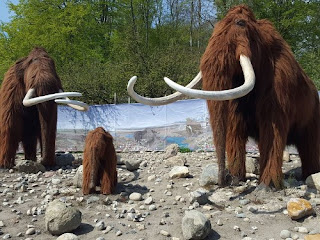Mammoth Antibodies and Radiocarbon Dating
Antibodies are an important part of the immune system. They are proteins that circulate in the bloodstream looking for harmful antigens. Those are enemy bacteria, viruses, and such. Each antibody is unique, defending against specific antigens. So how do they last in mammoths for assumed millions of years?
A study showed that antibodies in mammoths were still able to do their jobs — but antibodies break down over time like other biological things. To support deep time, researchers assumed deep time, which was circular reasoning. They also ignored essential biology.
 |
| Mammoths, Wikimedia Commons / Honymand / (CC BY-SA 4.0) |
A new technical report focusing on antibodies from Medieval human teeth also reported the discovery of antibodies from inside a wooly mammoth bone.1 Radiocarbon dating methods pinned tens of thousands of years to the mammoth fossil. Antibodies are relatively small proteins found in all kinds of body tissues. They contain a particular bond that should not last for eons. It seems that we lack some understanding either of antibody decay or of radiocarbon age-dating. Or is it both?
To learn more, see "World’s Oldest Antibody or Really Wrong Age?"